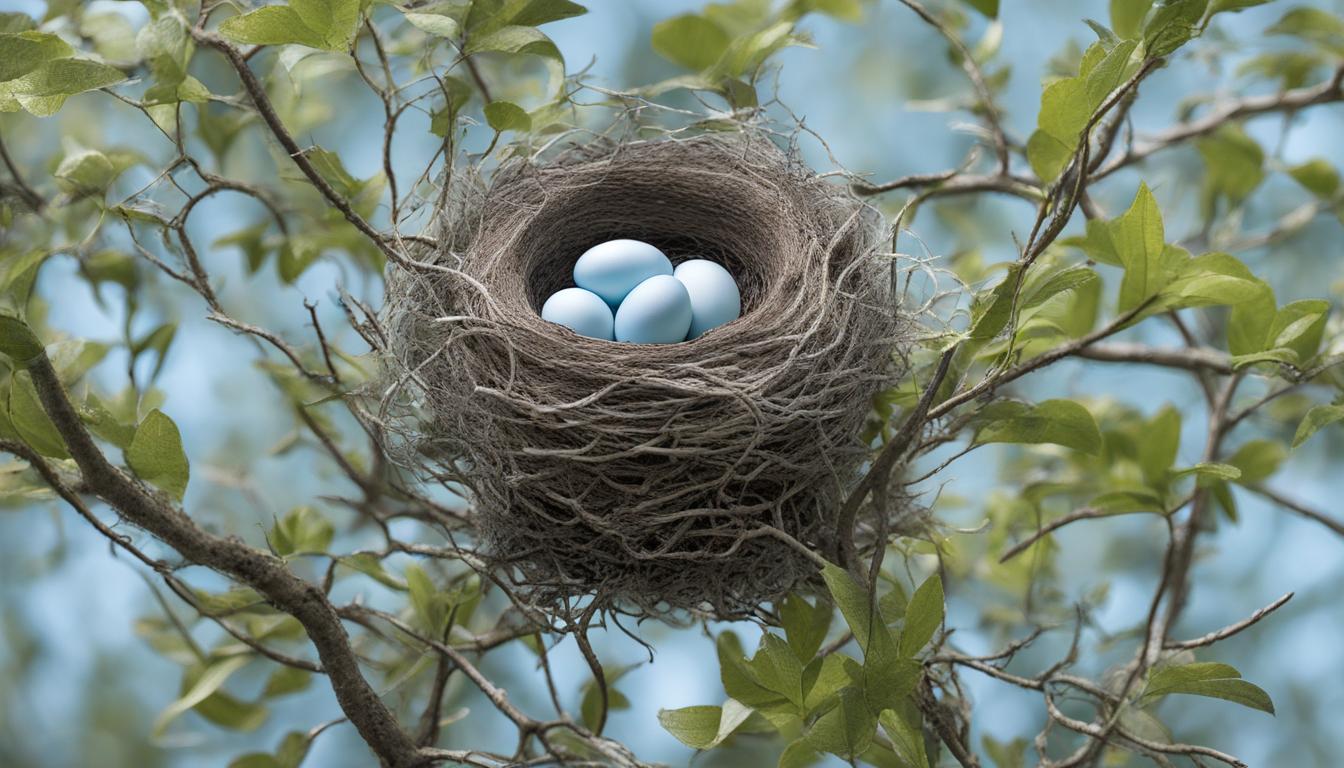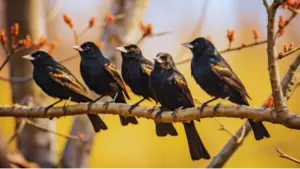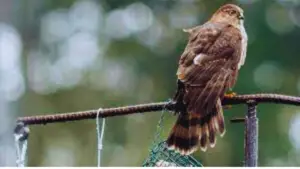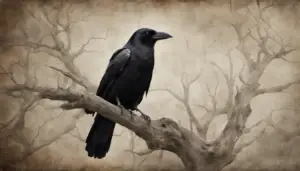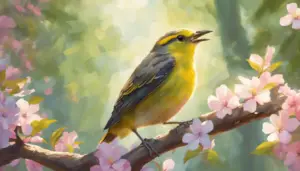Do you ever wonder how mockingbirds build their nests and care for their eggs? In this article, we will take a closer look at the nesting behavior of these fascinating birds.
From their choice of nesting sites to the number of eggs they lay, we will explore the intricacies of their nesting process.
You will learn about the incubation period and the dedicated parental care that mockingbirds provide for their eggs.
We will also delve into the nesting behavior of female mockingbirds and how they defend their territories and protect their nests from potential threats.
Additionally, we will discuss the challenges mockingbirds face and the conservation efforts in place to protect these remarkable birds and their nests.
So, get ready to dive into the world of mockingbird eggs and discover the wonders of their nesting behavior.
Key Takeaways
- Mockingbirds are highly territorial and defensive of their nests, often using mimicry, dive-bombing, and warning calls to protect against predators.
- Nesting behavior of mockingbirds involves building nests in shrubs, trees, and human-made structures, with a preference for shrubs, hedges, and small trees. Multiple nests within their territory provide safety and confusion for predators.
- Both male and female mockingbirds participate in nest building, incubation of eggs, and care for chicks, highlighting their teamwork and cooperation in raising young.
- Mockingbird eggs are camouflaged with various colors, speckles, and spots to match foliage and surroundings, increasing the chances of successful hatching and reducing predation risk.
Introduction to Mockingbirds and their Unique Nesting Behavior
Get ready to dive into the fascinating world of mockingbirds and discover their one-of-a-kind nesting behavior! Mockingbirds are known for their exceptional ability to mimic the songs of other birds, but their nesting behavior is just as remarkable.
These birds build their nests in a variety of locations, from shrubs and trees to human-made structures like fences and rooftops.
One unique aspect of mockingbird nesting behavior is their preference for building multiple nests. Unlike most birds that build just one nest, mockingbirds construct several nests within their territory. This behavior is believed to serve multiple purposes. Firstly, it helps to confuse predators, as they are less likely to find all the nests. Secondly, it provides the mockingbirds with options for raising their young, allowing them to choose the safest and most suitable nest for each brood.
Mockingbirds also exhibit interesting nest defense behaviors. When their nest is threatened, they become highly territorial and will defend their eggs and nestlings vigorously. They will dive-bomb intruders, emit warning calls, and even engage in physical confrontations if necessary. This behavior shows the dedication and determination of mockingbirds to protect their offspring.
In conclusion, mockingbirds‘ unique nesting behavior sets them apart from other birds. From building multiple nests to fiercely defending their young, these birds demonstrate adaptability and resourcefulness. Exploring the nesting habits of mockingbirds not only provides insight into their fascinating behaviors but also highlights the importance of conservation efforts to ensure the survival of these remarkable creatures.
Choice of Nesting Sites
A surprising fact about the nesting sites of mockingbirds is that they prefer shrubs and trees over other types of vegetation. While other birds may choose to build their nests on the ground or in open areas, mockingbirds opt for the safety and protection provided by foliage. This choice is likely due to their mimicking behavior, as it allows them to blend in with their surroundings and avoid detection from predators.
Mockingbirds are known to be adaptable and can make use of a variety of shrubs and trees for their nests. They are commonly found nesting in bushes, hedges, and small trees, such as oak or holly. These sites provide the necessary cover and support for their nests, ensuring the safety of their eggs and chicks.
To further understand the choice of nesting sites for mockingbirds, the following table provides a visual representation of their preferences:
| Preferred Nesting Sites |
|---|
| Shrubbery |
| Hedges |
| Small Trees |
By selecting these types of locations, mockingbirds are able to establish their nests in areas that offer protection, camouflage, and easy access to food sources. It is fascinating to observe how these mimicking birds carefully choose their nesting sites, showcasing their adaptability and survival strategies.
Nest Building Process
Imagine yourself watching as a mockingbird carefully selects twigs, leaves, and grass to construct its cozy nest in the branches of a shrub or small tree. The nest building process of mockingbirds is an intricate and fascinating sight to behold. Here’s a glimpse into this remarkable behavior:
- Meticulousness: Mockingbirds exhibit an incredible attention to detail when building their nests. They meticulously choose each twig and blade of grass, carefully weaving them together to create a sturdy structure. As you observe, you can’t help but be amazed at their precision and dedication.
- Creativity: Despite using similar materials, each mockingbird nest is unique. They incorporate a variety of materials like moss, feathers, and even bits of string or paper. Witnessing their creative approach to nest building is truly inspiring.
- Parental Bond: The nest building process strengthens the bond between the mockingbird pair. Both the male and female take part in constructing the nest, with the male often collecting the materials while the female arranges them. Their collaborative effort highlights the importance of teamwork and cooperation in raising their young.
As you continue to watch, you can’t help but feel a sense of wonder and admiration for these remarkable birds. Their ability to create such intricate nests with limited resources showcases their adaptability and resourcefulness. It’s a reminder of the beauty and complexity of nature’s design.
Number of Eggs Laid by Mockingbirds
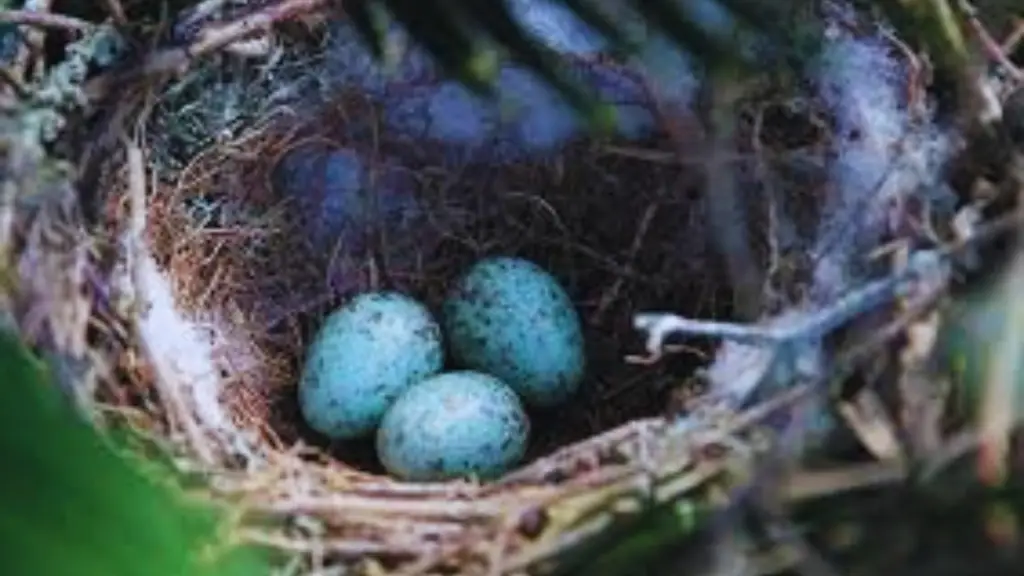
As you observe, you’ll be fascinated by the surprising number of eggs laid by these resourceful and adaptable birds. Mockingbirds are known for their ability to mimic the songs of other birds, but their reproductive habits are just as impressive.
A female mockingbird can lay anywhere from 2 to 6 eggs in a single clutch, with an average of 3 to 4 eggs being the most common. This may not seem like a lot compared to other bird species, but considering the size of the mockingbird, it is quite remarkable.
The number of eggs laid by mockingbirds can vary depending on various factors, including the availability of food and the quality of the nesting site. If resources are abundant, a female mockingbird may lay more eggs in order to take advantage of the favorable conditions. On the other hand, if resources are scarce, she may lay fewer eggs to ensure the survival of her offspring.
Once the eggs are laid, the female mockingbird will incubate them for about two weeks until they hatch. Both parents take turns incubating the eggs and caring for the chicks once they hatch. This shared responsibility allows the parents to provide the necessary warmth and protection for the eggs, ensuring the survival of their young.
In conclusion, the number of eggs laid by mockingbirds may not be the highest among bird species, but it is still impressive considering their size. These adaptable birds are able to adjust their reproductive output based on the availability of resources, ensuring the survival of their offspring in different environments.
Incubation Period and Parental Care
Get ready to be amazed by the incubation period and the level of parental care shown by these incredible birds! Mockingbirds are known for their exceptional abilities to mimic the songs of other birds, but their nesting behavior is just as fascinating.
When it comes to incubation, mockingbirds are dedicated parents. The female typically lays 2-6 eggs, which she will incubate for about 12-13 days. During this time, the male will help with the incubation, taking turns with the female to keep the eggs warm and protected. This shared responsibility showcases the strong bond between the parents and their commitment to ensuring the survival of their offspring.
Once the eggs hatch, the parental care continues. Both parents take on the responsibility of feeding and protecting the chicks. They tirelessly search for insects, berries, and fruits to provide a diverse and nutritious diet for their young. The chicks grow rapidly under the watchful eyes of their parents.
To give you a better understanding of the nesting behavior of mockingbirds, here is a table summarizing the incubation period and parental care:
| Incubation Period | Parental Care | |
|---|---|---|
| Duration | 12-13 days | Until the chicks fledge |
| Responsibilities | Shared by both parents | Shared by both parents |
As you can see, mockingbirds invest a significant amount of time and effort into raising their young. Their commitment to their offspring is truly remarkable and showcases the incredible instincts and abilities of these mimicking birds.
Egg Appearance and Camouflage
Now let’s dive into the fascinating world of mockingbird eggs and how they cleverly blend into their surroundings.
Mockingbird eggs come in a variety of colors, ranging from pale blue to greenish-gray. This diverse range of colors helps the eggs camouflage themselves in different environments, such as nests built in trees or shrubs. The color of the eggs closely matches the surrounding foliage, making them nearly indistinguishable to the untrained eye. This clever adaptation helps protect the eggs from predators who might otherwise spot them easily.
But it’s not just the color that helps the eggs blend in. Mockingbird eggs also have speckles and spots that mimic the patterns found on leaves or twigs. These markings provide additional camouflage, further disguising the eggs and making them even harder to spot. The combination of color and markings ensures that mockingbird eggs are well hidden and protected.
The ability of mockingbird eggs to blend into their surroundings is crucial for the survival of the species. By camouflaging their eggs, mockingbirds increase the chances of successful hatching and reduce the risk of predation. It’s truly remarkable how these small birds have evolved such intricate adaptations to ensure the safety of their offspring.
So next time you come across a mockingbird nest, take a moment to appreciate the incredible camouflage of their eggs and the remarkable parenting skills of these mimicking birds.
Nesting Behavior of Mockingbird Males
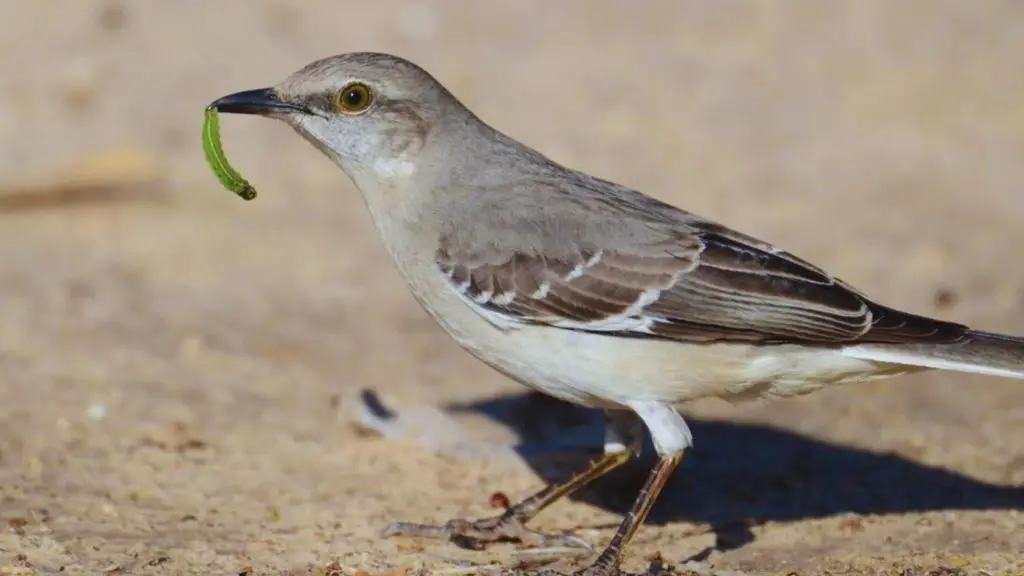
The remarkable parenting skills of male mockingbirds are evident in their diligent nesting behavior and the care they provide to their offspring. Male mockingbirds play a crucial role in building the nest and protecting it from predators. They construct the nest using twigs, grass, and other materials, carefully weaving them together to create a sturdy structure. Once the nest is built, the male mockingbird takes on the responsibility of incubating the eggs. He sits on the nest for long periods, keeping the eggs warm and safe. During this time, he also defends the nest territory, chasing away any potential threats. The male mockingbird’s dedication to his nest and eggs is truly admirable.
To further understand the nesting behavior of mockingbird males, let’s take a look at the table below:
| Nesting Behavior of Mockingbird Males | Description |
|---|---|
| Nest Construction | Male mockingbirds build nests using twigs, grass, and other materials, creating a sturdy structure. |
| Incubation | The male mockingbird takes on the responsibility of incubating the eggs, keeping them warm and safe. |
| Territory Defense | While incubating, the male mockingbird defends the nest territory from potential threats. |
| Nest Maintenance | Male mockingbirds also engage in nest maintenance, ensuring the nest remains clean and intact. |
This table highlights the various tasks undertaken by male mockingbirds during nesting, showcasing their commitment and dedication to their offspring.
Nesting Behavior of Mockingbird Females
Female mockingbirds play a vital role in the nesting process. They actively engage in creating a safe environment for their eggs and offspring. Here are some fascinating facts about the nesting behavior of mockingbird females:
- Building the nest: Female mockingbirds are skilled architects, constructing their nests using twigs, grass, and other materials. They carefully arrange the nest to provide a sturdy and secure structure for their eggs.
- Incubation: Once the nest is built, the female takes on the responsibility of incubating the eggs. She carefully keeps them warm, turning them regularly to ensure even temperature distribution.
- Defense: Female mockingbirds fiercely defend their nests against potential threats. They will dive-bomb intruders, including larger birds or even humans, to protect their eggs and nestlings.
- Single parenting: In some cases, female mockingbirds raise their young on their own. They take on the dual role of both parents, providing food, protection, and guidance until the fledglings are ready to leave the nest.
The nesting behavior of mockingbird females is a testament to their dedication and commitment to their offspring. They are an integral part of the nesting process and deserve recognition for their vital contributions.
Territory Defense and Nest Protection
Picture yourself as the fearless guardian of your domain, defending your cherished sanctuary from intruders and ensuring the safety of your precious nest. As a mockingbird, territory defense and nest protection are of utmost importance to you.
Your nesting behavior includes actively patrolling your territory, chasing away any potential threats that dare to come close.
You take pride in your ability to mimic the songs and calls of other birds, using this skill to your advantage in your defense tactics. When an intruder enters your territory, you respond with a flurry of diverse bird songs, confusing and intimidating them. Your quick and agile flight allows you to swoop down on these intruders, warning them to stay away from your nest.
But it’s not just other birds that you defend your territory from. You are also vigilant against larger predators like squirrels, cats, and even humans. You boldly confront these threats, swooping down and dive-bombing them to keep them away from your nest.
Nest protection is another critical aspect of your nesting behavior. You carefully choose the location of your nest, often hidden among dense foliage, to provide extra security. You fiercely defend your nest from any potential harm, using your sharp beak and claws to attack and drive away any predators that come too close.
As the fearless guardian of your domain, you take your role seriously. Your tireless efforts in territory defense and nest protection ensure the safety and survival of your precious mockingbird eggs.
Challenges and Threats to Mockingbird Nests
Now that you understand how mockingbirds tirelessly defend their territory and protect their nests, let’s delve into the challenges and threats these resourceful birds face. As a curious observer, you might wonder what obstacles these cunning mimics encounter when it comes to nesting.
Mockingbird nests are not immune to danger. They face a multitude of threats, ranging from predators and harsh weather conditions to human interference. Predators like snakes, feral cats, and raccoons are always on the lookout for an easy meal, making mockingbird nests prime targets. These clever birds, however, have developed ingenious strategies to combat these threats, such as building their nests in dense shrubs or thorny bushes that deter predators.
But it’s not just natural predators that pose a risk. Human activities can also disrupt mockingbird nests. Habitat destruction, pesticide use, and disturbance from urban development can all have a negative impact on these birds’ nesting success. It’s important for us to be mindful of our actions and create a safe environment for these remarkable birds to thrive.
So, next time you spot a mockingbird nest, take a moment to appreciate the challenges they face and the incredible resilience they exhibit. By understanding and respecting their nesting struggles, we can ensure a brighter future for these fascinating mimicking birds.
Conservation Efforts to Protect Mockingbirds and their Nests
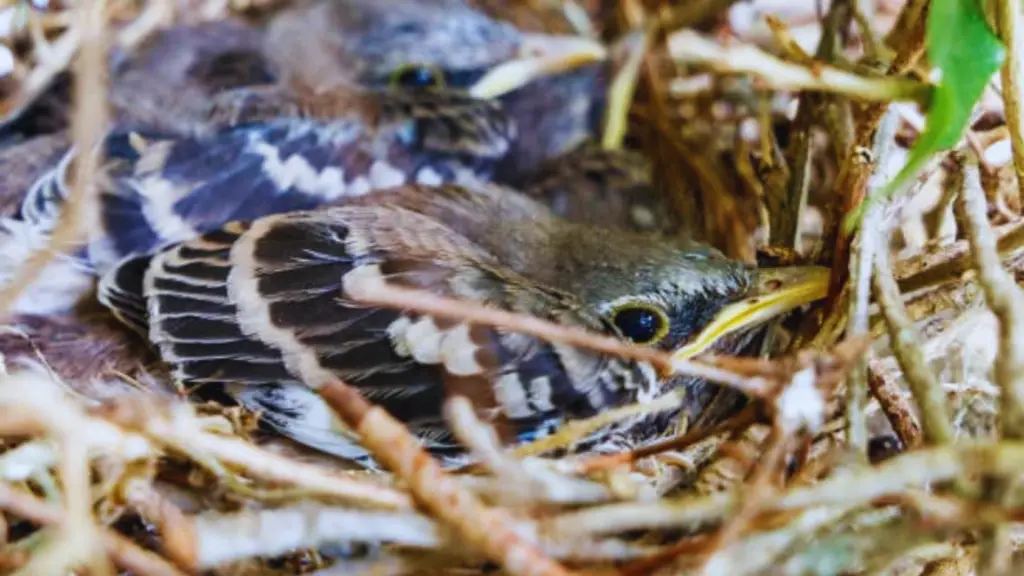
Take a moment to appreciate how conservation efforts are being made to protect and preserve the habitat and nests of these remarkable birds. Mockingbirds, with their exceptional ability to mimic various sounds, are a joy to behold. However, their nests face numerous challenges and threats. Thankfully, there are dedicated individuals and organizations working tirelessly to ensure the survival of these unique birds.
One of the main threats to mockingbird nests is habitat destruction. As urbanization continues to encroach upon their natural habitats, nesting sites become scarce. Conservationists are actively working to create and maintain suitable nesting environments, such as planting native trees and shrubs that provide ample cover and food sources.
Another significant challenge is predation. Mockingbird eggs and nestlings are vulnerable to a variety of predators, including snakes, squirrels, and even other birds. To combat this, conservation efforts focus on implementing predator deterrents, such as installing nesting boxes in safe locations and utilizing artificial decoys to divert potential threats.
Furthermore, education plays a crucial role in protecting mockingbirds and their nests. By raising awareness about the importance of these birds and their nesting behaviors, conservationists are inspiring individuals to take action. This can range from reporting nest disturbances to participating in citizen science projects that monitor nesting success.
In conclusion, conservation efforts are vital in safeguarding mockingbirds and their nests. Through habitat preservation, predator management, and education, we can ensure that these remarkable birds continue to thrive for generations to come. So, let’s join hands in protecting and cherishing these incredible creatures.
Mockingbird Eggs: FAQs
How do mockingbirds choose their nesting sites?
Mockingbirds choose their nesting sites based on various factors. They look for safe and secluded spots, such as dense shrubs or trees, to protect their eggs from predators. They also prefer areas with abundant food sources nearby.
How long does it take for mockingbirds to build their nests?
It’s fascinating how quickly mockingbirds construct their nests, but you won’t believe just how long it takes. In just 6-8 days, these incredible birds can build a cozy home for their eggs.
Do mockingbirds lay their eggs all at once or over a period of time?
Mockingbirds lay their eggs over a period of time. They don’t lay them all at once. Instead, they lay one egg every day or every other day until the clutch is complete.
How long do mockingbirds incubate their eggs?
Mockingbirds incubate their eggs for about 12-13 days. During this time, they keep the eggs warm and protected in their nests. Once the incubation period is over, the eggs hatch into baby mockingbirds.
What are some common threats to mockingbird nests and how are they protected?
Common threats to mockingbird nests include predators like snakes and cats. To protect their nests, mockingbirds use clever strategies, such as building their nests in hidden locations and aggressively defending them from intruders.
Conclusion
As you delve into the world of mockingbird nesting behavior, you witness a symphony of resilience and adaptability.
These mimicking birds, like master storytellers, craft their nests with precision and care.
The female mockingbird, a tireless guardian, fiercely defends her territory and protects her precious eggs.
Yet, amidst the challenges and threats they face, these brave creatures continue to inspire and captivate.
Just as the mockingbird’s melody enchants our ears, let us join together to ensure their nests remain safe havens, echoing with the beauty of nature’s harmonious tale.

